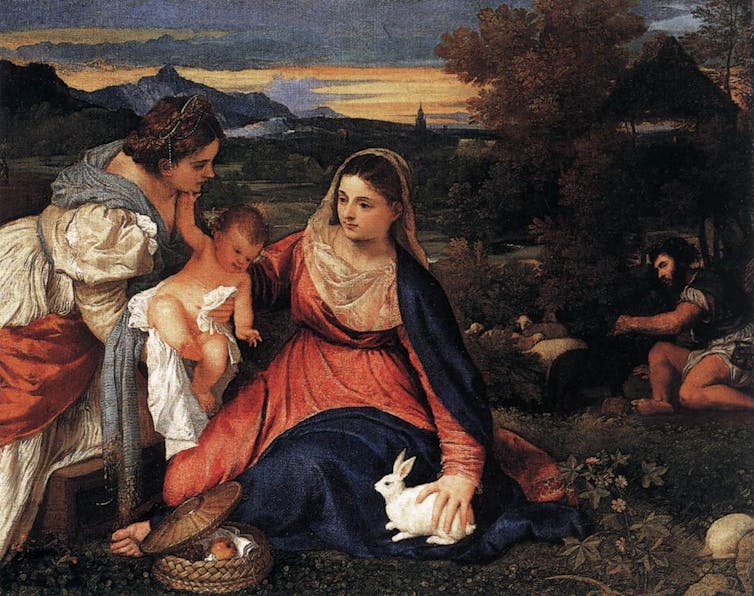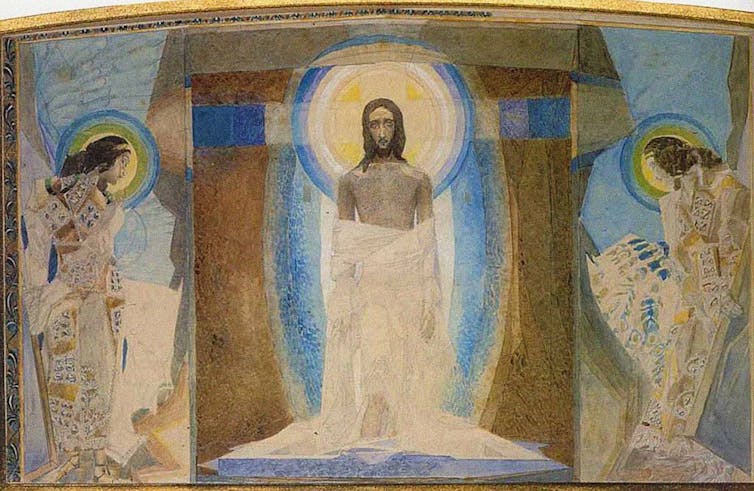What’s Easter about? In some ways, the reply is pretty easy: Jesus Christ, and Christians’ belief that he rose from the dead.
In other ways, though, the springtime holiday is removed from straightforward. How did rabbits become involved? Where did the name “Easter” come from – and why is the English word different from the way in which many other cultures discuss with the holy day? Even theologically, exactly what the Resurrection means is just not universally agreed upon.
Here are 4 articles that delve into Easter’s history, its significance – and what a rock ‘n’ roll Broadway show has to do with it.
1. Picking the date
First things first: Easter is what’s called a “movable feast,” a vacation whose exact date changes yr to yr. In the Northern Hemisphere it falls soon after the spring equinox, because the world comes back into bloom – a fitting time to rejoice rebirth.
But Easter’s dating “goes back to the complicated origins of this holiday and the way it has evolved over the centuries,” wrote Brent Landau, a spiritual studies scholar on the University of Texas at Austin. Similar to Christmas and Halloween celebrations today, Easter blends together elements from Christian and non-Christian traditions.
Mario Tama/Getty Images
The name “Easter” itself seems linked to a pre-Christian goddess named Eostre in what’s now England; she was celebrated in springtime. And in actual fact, in most languages, the word for the vacation is said to Passover, because the Gospels say Jesus traveled to Jerusalem to rejoice the Jewish festival in the times leading as much as his crucifixion.
But “celebrating” Easter, per se, wasn’t all the time in fashion with Christians. For the Puritans, Landau explained, these holidays were considered too tainted by merrymaking and un-Christian influences. As Nineteenth-century American culture embraced the thought of childhood as a special time in life, though – not only preparation for maturity – each Christmas and Easter became popular occasions to spend time with family.
Read more:
Why Easter is known as Easter, and other little-known facts concerning the holiday
2. Holy hares
The Easter bunny’s bio starts long before the 1800s, though. Rabbits’ and hares’ famous fertility has made them symbols of rebirth for hundreds of years. Some were ritually buried alongside people through the Neolithic age, for instance.
Of course, that fecundity also makes them symbols of sex, as anyone who’s seen the Playboy logo is aware. “In the Classical Greek tradition, hares were sacred to Aphrodite, the goddess of affection,” explained folklorist Tok Thompson, a professor at USC Dornsife. The goddess’s son Eros was also depicted carrying a hare “as a logo of unquenchable desire,” and even the Virgin Mary is usually painted with a rabbit, to symbolize how she overcame desire.

A painting by artist Titian (1490-1576), Louvre Museum, Paris.
Modern-day Easter bunny traditions stem from folk traditions in Germany and England, and there’s evidence that the goddess Eostre’s symbol was the hare as well.
Read more:
Sacred hares, banished winter witches and pagan worship – the roots of Easter Bunny traditions are ancient
3. Victory over death
Holy Week, the series of events in Christian churches that lead as much as Easter, traces Jesus’ final days before death and resurrection, including Palm Sunday and the Last Supper. Easter Sunday itself is the climax of the story: his overcome death.
“As a Baptist minister and theologian myself, I think it will be significant to grasp how Christians more generally, and Baptists particularly, hold differing views on the meaning of the resurrection,” wrote Jason Oliver Evans, a doctoral candidate on the University of Virginia.

Fine Art Images/Heritage Images/Hulton Fine Art Collection via Getty Images
Over the centuries, Evans wrote, Christians have had “passionate debates over this central doctrine of Christian faith” and what it means for Jesus’ followers – resembling whether his body was literally raised from the dead.
Read more:
Christians hold many views on Jesus’ resurrection – a theologian explains the differing views amongst Baptists
4. Superstar
There are some ways to share the story of Holy Week – and one of the controversial ones debuted on Broadway in 1971.
“Jesus Christ Superstar,” the rock musical by Andrew Lloyd Webber and Tim Rice, struck some Christians as blasphemous with its modern-day telling of the Passion and “Jesus is cool” ethos. Then there’s the show’s ending, which cuts off after the crucifixion – cutting out the Resurrection, and its theological message, entirely.

Blick/RDB/ullstein bild via Getty Images
Half a century later, though, “Superstar” raises fewer eyebrows – a mirrored image of changes in U.S. culture and Christianity, wrote Henry Bial, a theater professor on the University of Kansas. Maybe that shouldn’t be such a shock: As he identified, theater and drama have all the time been entwined with Bible stories.
Read more:
Best Easter pageant ever? Half a century of ‘Jesus Christ Superstar’
Editor’s note: This story is a roundup of articles from The Conversation’s archives.


